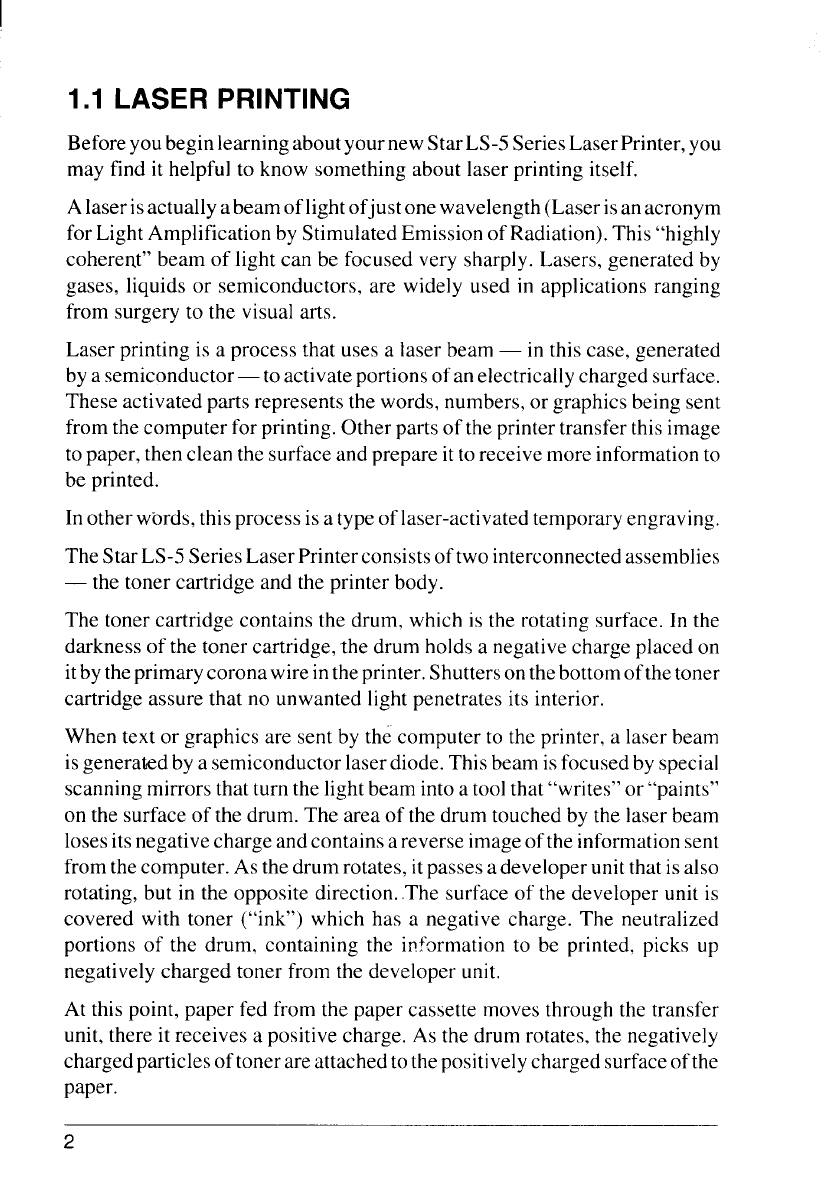
1.1 LASER PRINTING
Before youbegin learning aboutyour new Star LS-5 SeriesLaser Printer, you
may find it helpful to know something about laser printing itself.
Alaser isactually abeam of lightofjust one wavelength (Laser isanacronym
for Light Amplification by Stimulated Emission of Radiation). This “highly
coherent” beam of light can be focused very sharply. Lasers, generated by
gases, liquids or semiconductors, are widely used in applications ranging
from surgery to the visual arts.
Laser printing is a process that uses a laser beam — in this case, generated
by a semiconductor — to activate portions of an electrically charged surface.
These activated parts represents the words, numbers, or graphics being sent
from the computer for printing. Other parts of the printer transfer this image
to paper, then clean the surface and prepare it to receive more information to
be printed.
In other words, thisprocess is a type of laser-activated temporary engraving.
The Star LS-5 SeriesLaser Printer consists of two interconnected assemblies
— the toner cartridge and the printer body.
The toner cartridge contains the drum, which is the rotating surface. In the
darkness of the toner cartridge, the drum holds a negative charge placed on
itbythe primary corona wire intheprinter. Shutterson thebottomofthetoner
cartridge assure that no unwanted light penetrates its interior.
When text or graphics are sent by the computer to the printer, a laser beam
isgenerated by a semiconductor laserdiode. This beam is focused by special
scanning mirrors that turn the light beam into a tool that “writes” or “paints”
on the surface of the drum. The area of the drum touched by the laser beam
losesits negative charge and contains a reverse imageofthe information sent
from the computer. As the drum rotates, itpasses a developer unitthat is also
rotating, but in the opposite direction. The surface of the developer unit is
covered with toner (“ink”) which has a negative charge. The neutralized
portions of the drum, containing the information to be printed, picks up
negatively charged toner from the developer unit.
At this point, paper fed from the paper cassette moves through the transfer
unit, there it receives a positive charge. As the drum rotates, the negatively
charged particles of toner are attached to the positively charged surfaceofthe
paper.
2


















